i’m not china be funny!
- Sherry Brecher
- Dec 21, 2017
- 7 min read
Updated: Nov 15, 2018
With a population of 1.38 billion people, I expected China to be congested, overcrowded and hectic. I thought I’d be jostled, shoved and suffer from endless invasions of personal space. I anticipated complete chaos.
As it turned out, I completely misjudged China! Considering that China is the most populous country in the world, there were not nearly as many people out and about as I thought there would be and I found the country, as a whole, to be quite organised and orderly.
In Shanghai in particular, I was surprised by the quiet tree-lined streets in the French Concession, the general lack of noise and bustle, the amount of green space/parks, how wide roads were and how systematic public transit was. Additionally, Shanghai Pudong was one of the most efficient international airports I have ever gone through. It took me a mere 30 mins from landing to being in a taxi, including going through immigration and baggage reclaim, withdrawing cash and clearing customs.

Where I did find things to be a bit insane was on the roads. Traffic was horrendous in both Shanghai and Beijing. Driving was questionable and pedestrians certainly did not have the right of way. Motorbikes dangerously served around people on the streets and often even drove on the sidewalks. Walking around anywhere was like a game of Frogger.
Apart from being recklessly operated, motorbikes are also one of the contributors to the stifling air quality in China's big cities. It's a serious problem and it's likely that pollution will become China's biggest health threat in the very near future, but I was quite lucky on my trip in that I didn’t experience any smog at all. I had nothing but beautiful blue skies.
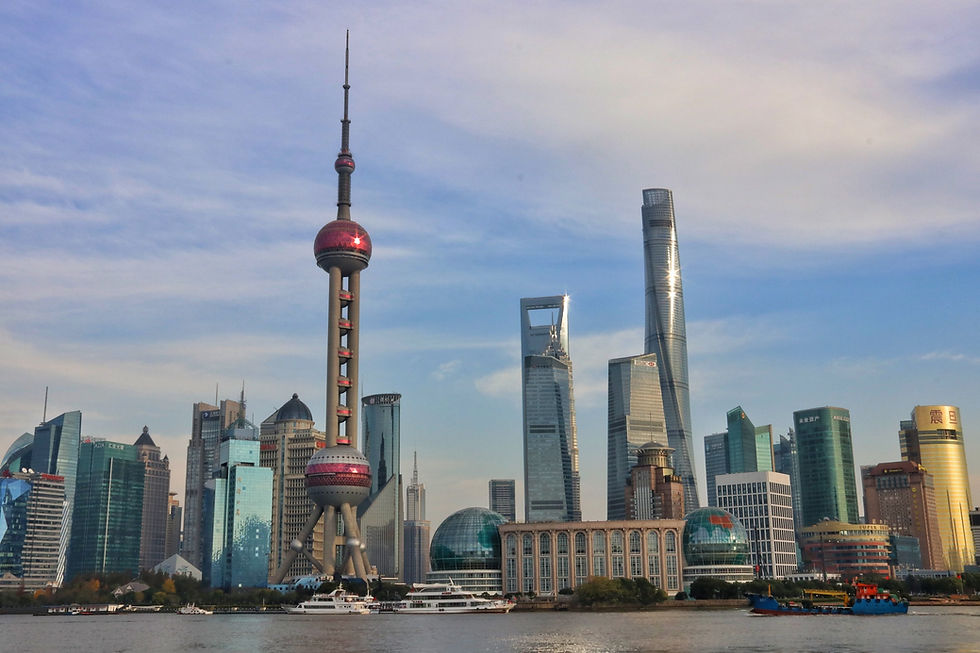
Another idiosyncrasy that I expected to encounter a whole lot more than I did was public spitting and clearing of nostrils. Although I did witness these acts from time-to-time, there was far less phlegm spewing than I was prepared for. Us Westerners find these habits vulgar, but I learned that the Chinese are equally as disgusted with our taking our snot with us after using a tissue.
Patience is a virtue that will serve you well in China. Many signs were in English, but I did not find that many people actually spoke the langauge. Despite not being able to communicate easily, the Chinese were quite a friendly people. This trip validated what I've learned on other travels - a smile translates similarly in every language.
Below are the highlights that I'd recommend in Shanghai and Beijing, and some helpful tips in case you fancy a trip to China.
Shanghai
The Bund is a waterfront area in central Shanghai where an innumerable amount of Easter egg-colored skyscrapers line the Huangpu River. It's particularly striking at night, when everything is lit up.
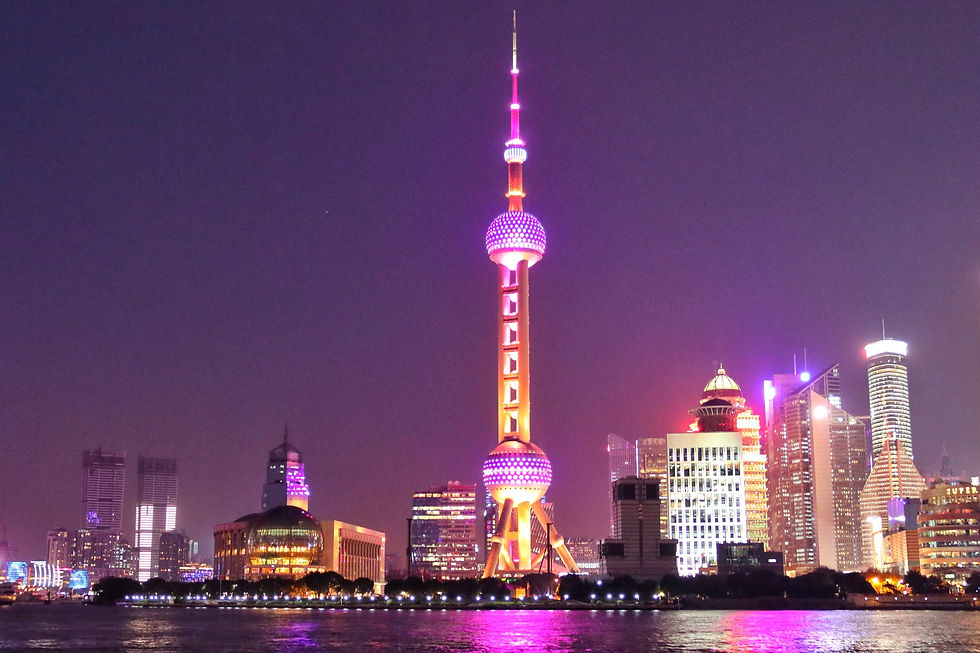
Yuyuan Garden, known more simply as Yu Garden, is located in the northeast of Shanghai's Old City. It is believed to have been built more than 400 years ago, in the Ming Dynasty. Here you will see classic Chinese architecture as you wander along the zigzagged bridges over a large koi pond.
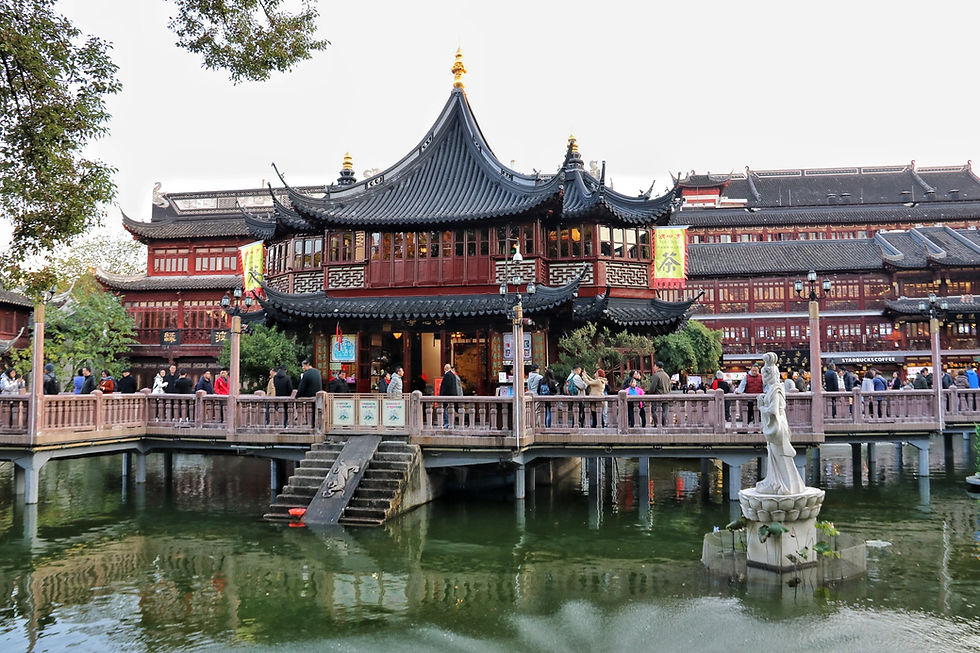
If you're lucky, you'll get to witness a feeding frenzy amongst the koi fish as tourists drop crumbs in the water.
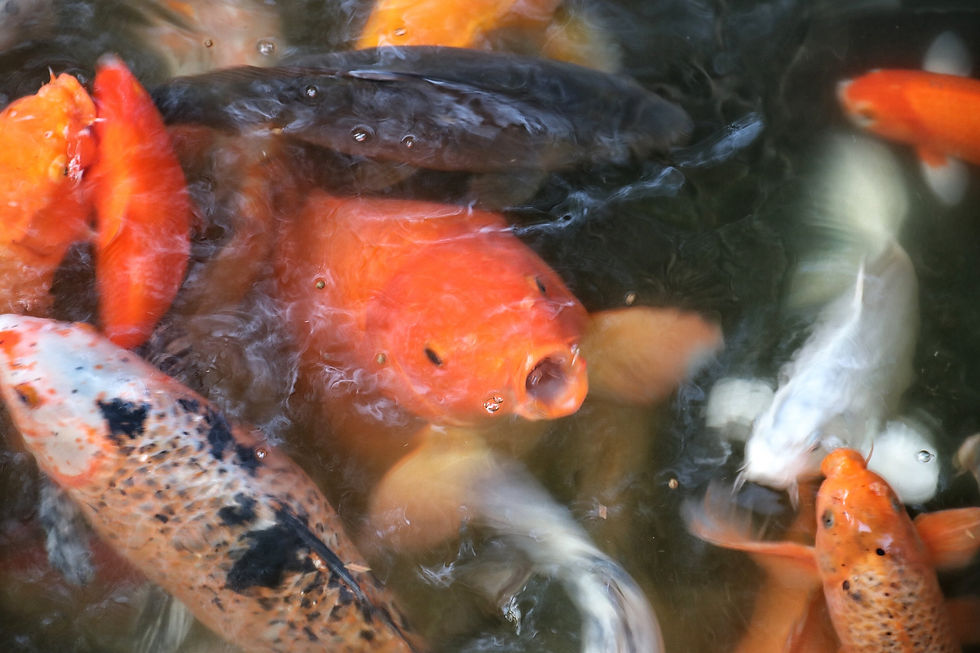
The Shanghai Jewish Refugees Museum commemorates more than 13,700 Jewish refugees who were welcomed into Shanghai during WWII. I located four family members on the Wall of Names who claimed asylum in Shanghai after fleeing Europe to escape the Holocaust.

The Grand Hyatt (in the iconic Jin Moa Tower) is an 88-story hotel with a dizzying atrium. Below is the view from the 87th floor, looking down to reception on the 54th level.
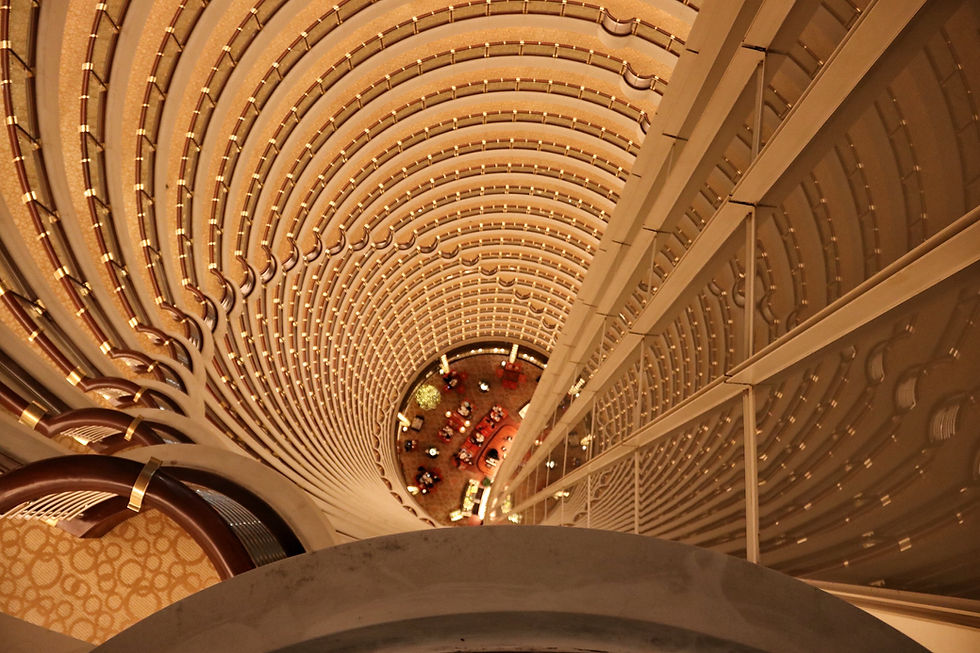
Below is a view of Shanghai's Financial District (Lujiazui) and the Bund, from Cloud 9, the bar at the top of the Grand Hyatt. Surprisingly, Shanghai is only 5th in the world on the list of cities with the most skyscrapers measuring at least 150m. Hong Kong, NYC, Dubai and Tokyo rank ahead of Shanghai.
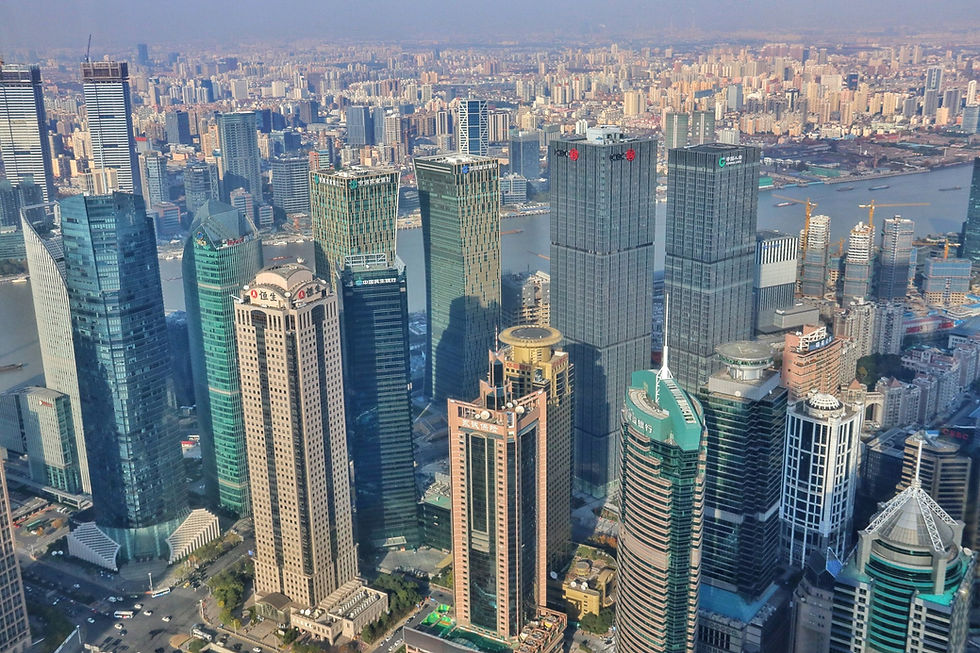
There are fake versions of everything in China - from fast food chains to watches and currency, even meat. In Shanghai there are whole markets dedicated to knockoffs. It's a cultural experience to visit these labyrinths of stalls filled with fake versions of everything you can imagine. Also, it's a great place to work on your negotiating skills. Bargaining is expected and encouraged. As a foreigner, your initial prices will be higher, but if you haggle hard, you can negotiate as much as 80-90% off.
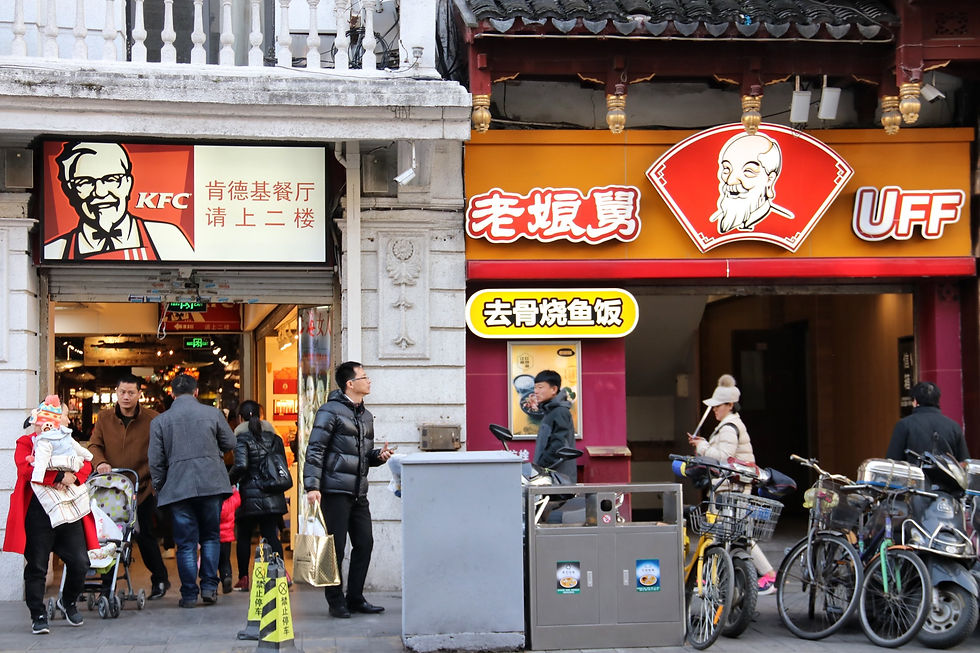
Beijing
Jingshan Park is an imperial park. Pictured below is an elderly woman doing some morning stretching, with a view of the Forbidden City in the background.
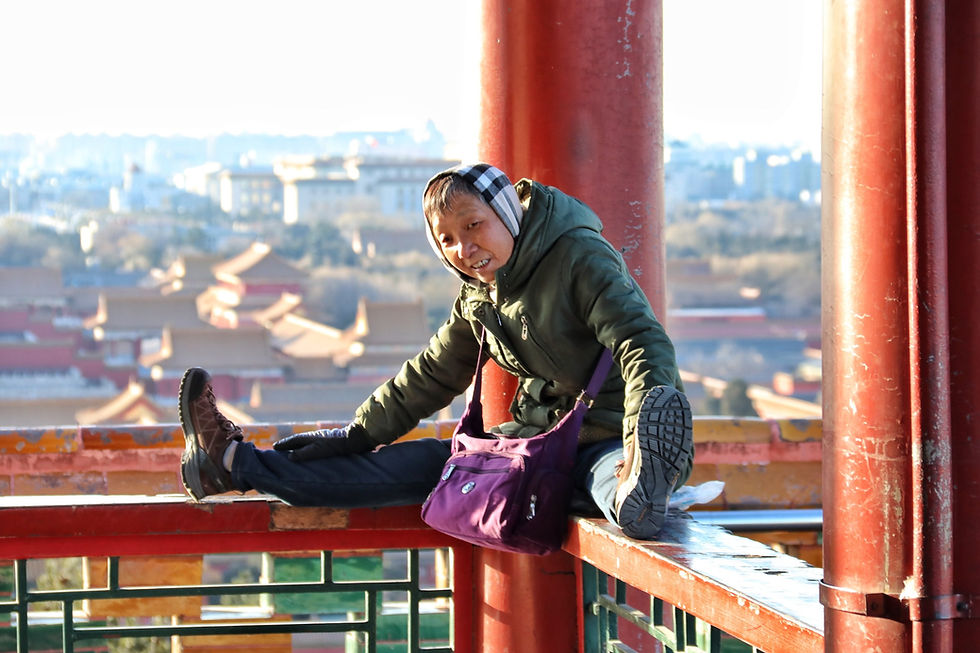
The Beijing Olympic Green was constructed for the 2008 Summer Olympics. The National Stadium, nicknamed the Bird's Nest, is shown below. It cost $428 million. It will be used again in the 2022 Winter Games.
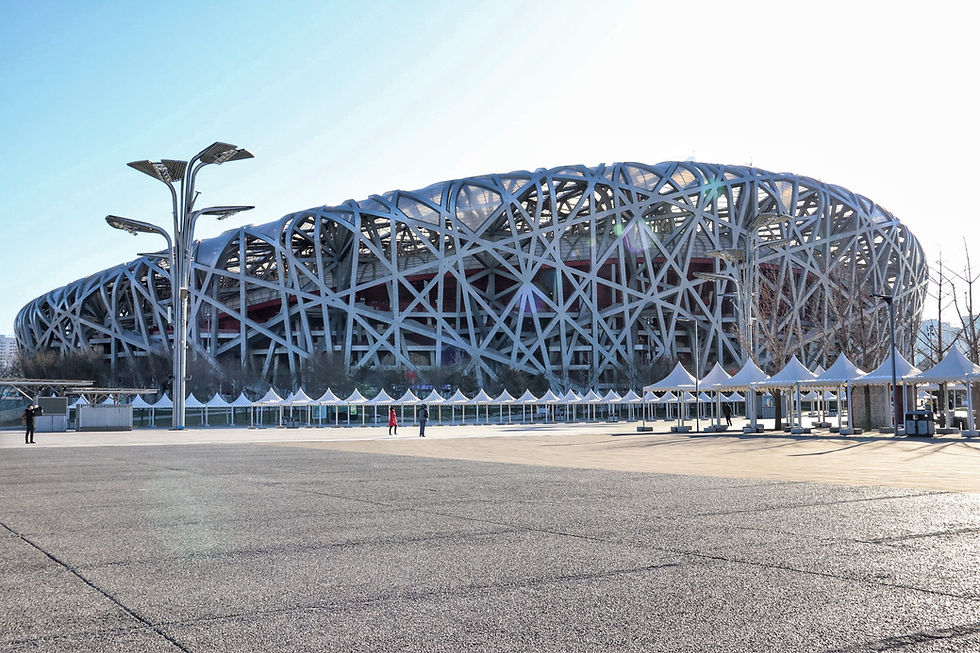
Also within the Olympic Green, sits the 'Water Cube' (the National Aquatics Center) where all the swimming competitions for the 2008 Olympics were held. The facade of the building was designed to look like soap bubbles.
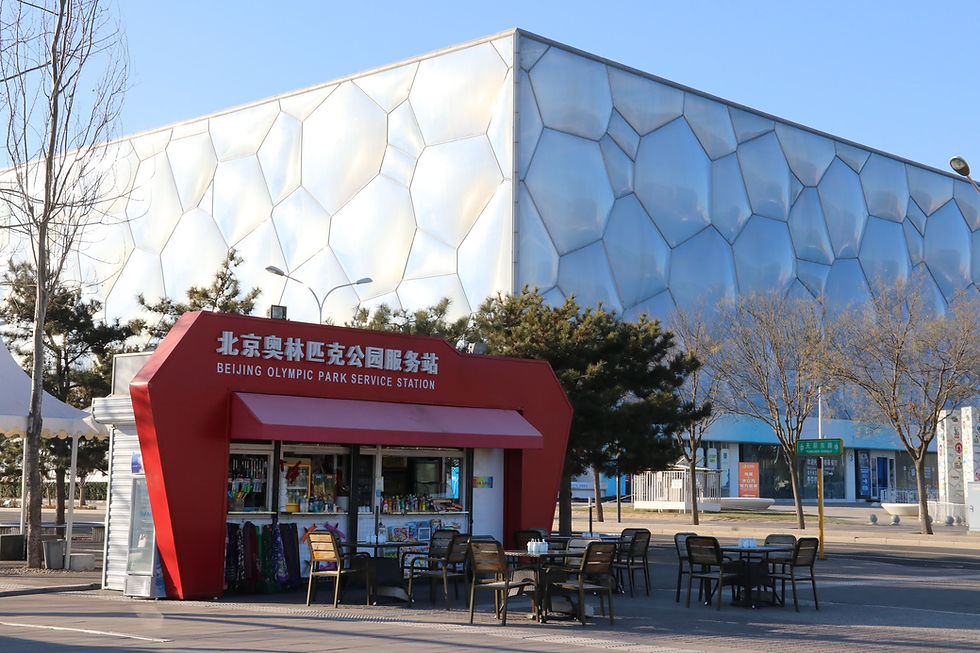
The Summer Palace is on the UNESCO World Heritage list. Three quarters of it is a lake and the rest is made up of gardens, temples, bridges and palaces. It would have looked a whole lot more 'Summery' if the lake wasn't frozen.
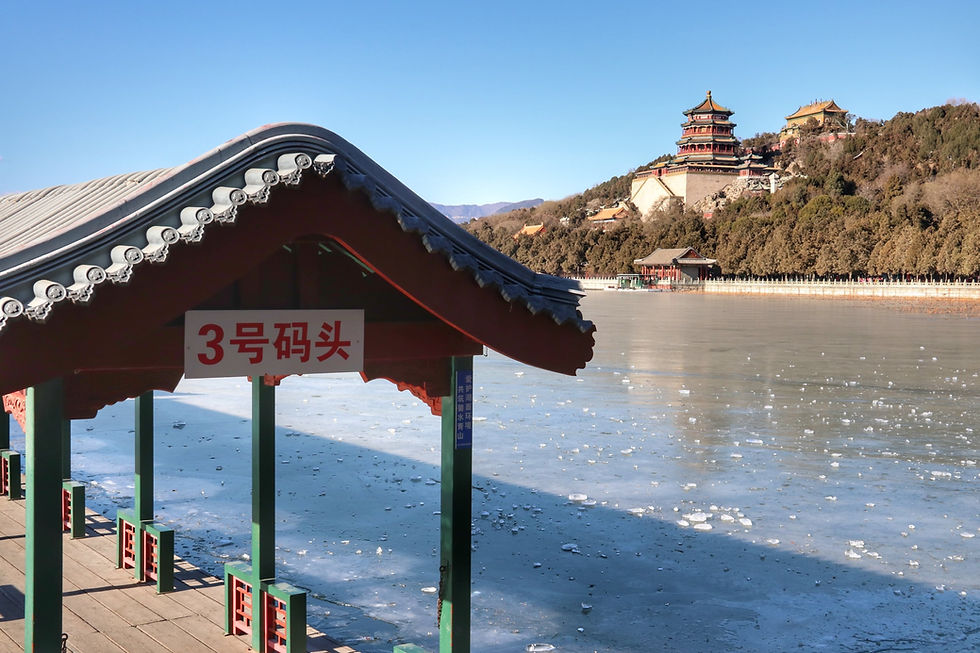
It's said that the longest corridor in the world is at the Summer Palace. It is aptly called the Long Corridor.
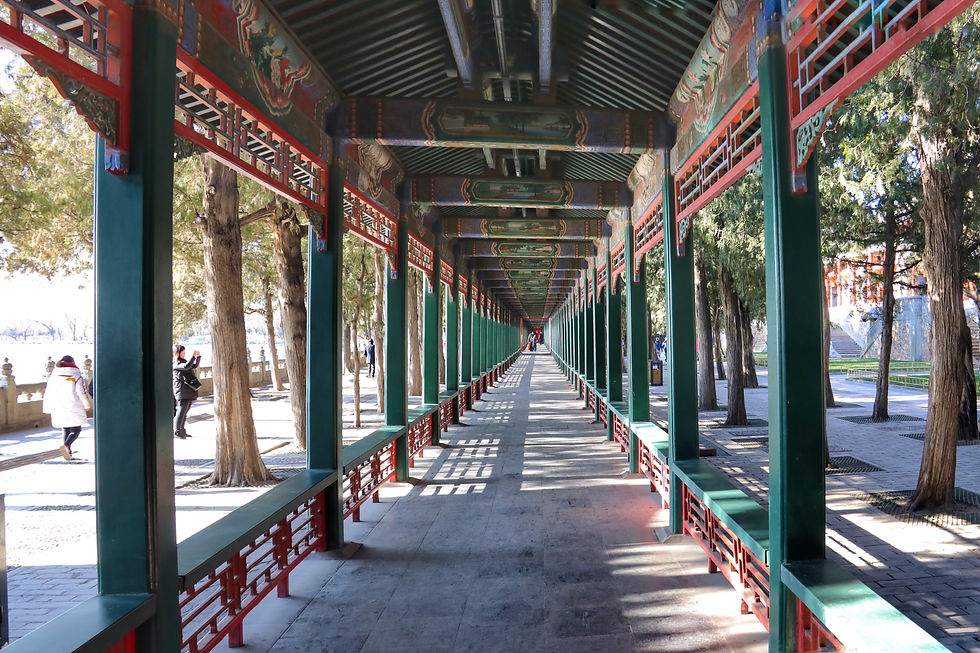
The Temple of Heaven is an imperial complex of religious buildings that was visited by the Emperors of the Ming and Qing dynasties for annual ceremonies of prayer to Heaven, for good harvest. The coolest part was the Echo Wall. The eaves and hermetically laid bricks of this wall make the refraction of sound waves possible. As a result, people can communicate, wirelessly, from opposite sides of the complex, when only speaking at a whisper.
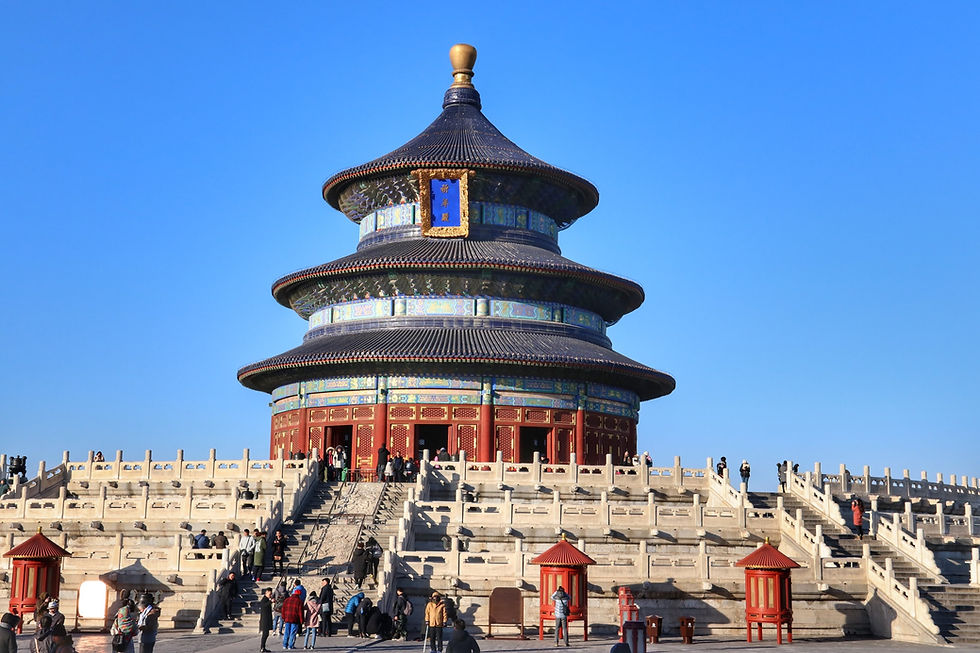
Tiananmen Square is located in the center of China's capital, Beijing. It is most well-known for the protests that occurred in 1989, resulting in the massacre of thousands of civilians.
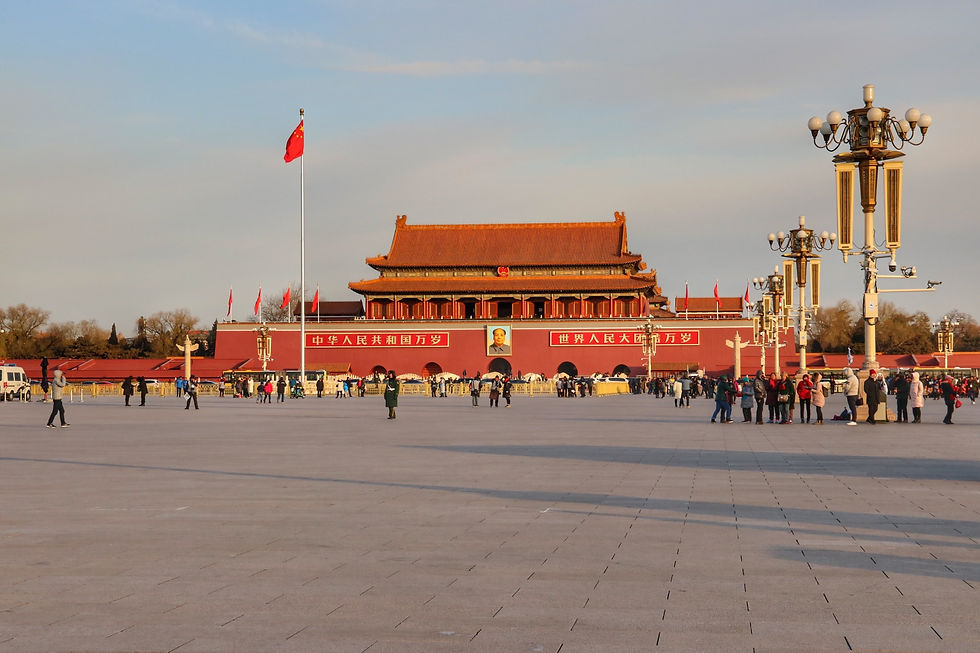
The Forbidden City is a palace complex, just over the road from Tiananmen Square, perched below Jingshan Park. It now houses the Palace Museum and the Imperial Gardens.
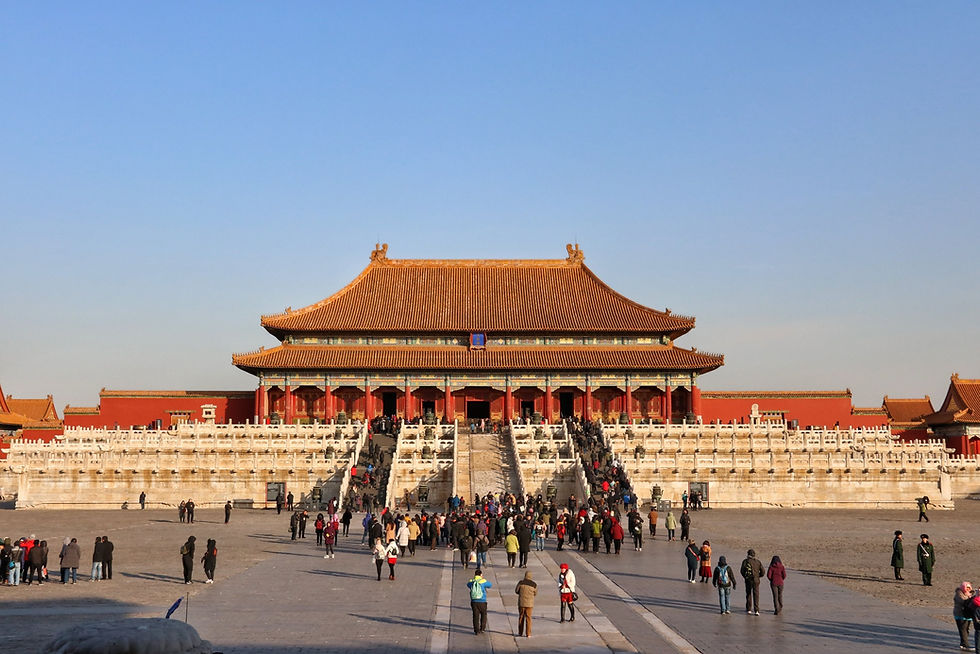
The highlight of Beijing was the Mutianyu section of the Great Wall of China. It was very cold, which probably contributed to fewer tourists, but this part of the wall is often less congested anyway. We took the cable car up at watchtower 14 and hiked around to some of the other watchtowers. It was magnificent! If you walk to the left when you get on the wall, it's quite steep and hilly. However, if you go to the right, it's downhill and then you can take the Alpine slide down. I didn't get to do it because it was so cold, but I'd love to go back and try it another time.

Eat at Dali Courtyard. The menu is strictly prix fixe and you won't know exactly what you'll be served, but we had dishes like grilled goat cheese, grilled chilli fish, spicy stir-fried mushrooms, Yunnan-style dumplings, noodles, fried shrimp and stir-fried wild vegetables. This restaurant was voted “Outstanding Chinese Restaurant of the Year,” "Outstanding Outdoor Dining" and "Outstanding Yunnan" in the Beijinger’s 2011 Reader Restaurant Awards.
Know Before You Go:
The visa process for The People’s Republic of China can be a bit confusing and I found the website slightly convoluted. Since I had limited time before my trip and had to get things right the first time around, I ended up paying a bit extra to use a visa service company called VisaHQ. I have used them in the past and they are pretty good. I paid £180.80 for a what I thought was a single-entry visa and it took 4 days to process. I believe I ended up with a multiple-entry visa that’s good for 10 years, however.
The photo requirements for the Chinese visa are very specific. Both ears must show, you must wear a neutral expression and no jewelry is allowed. Make sure you read the instructions carefully to avoid delay and/or declination.
The Great Firewall is real. Be sure to sign up for a VPN so you can access blocked sites/apps, including, but not limited to Facebook, Instagram, the whole suite of Google products, many media outlets, Netflix, etc. I used Express VPN and had no issues. It was easy to set up and to operate.
I also downloaded Didi, the Chinese ride-hailing Uber alternative app, before I left the UK. Unfortunately, I never got it to work properly. Maybe you’ll have better luck. Taxis were difficult to hail at times, so it would have been handy to have had this app working.
China is generally quite safe, with relatively low crime. There are some scams and pickpockets in touristy spots, but be vigilant and you’ll be fine.
Taxis were very inexpensive, but make sure you are in a licensed cab and that the meter is running. Also, this didn’t happen to me, but I’ve heard of taxi drivers scamming foreign passengers. When you hand the driver 50 or 100 yuan notes, at the end of the ride, they secretly swap out your real bills for fake notes, give the bogus ones back to you and demand that you pay them in real bills, leaving you with the fraudulent bills and double payment. To avoid this, pay attention to the serial number on the top left corner of your note and learn how to identify fake Chinese currency.
The currency is officially the Yuan Renminbi. People call it Yuan or RMB. No other currency is accepted in China.
Tipping is not expected in China.
Credit Cards are not accepted in many places. Be sure to have cash on you. For the best exchange rates, withdraw cash from ATM’s, not at the airport.
WeChat is the most popular messaging service in China. It’s got a lot of cool functionalities. Download it before you go.
‘Ganbei’ is how you say cheers in Mandarin.
The language barrier is difficult, but the Google Translate app can provide some aid. Be sure to also bring a printout or have a screenshot of your hotel’s name, written in Chinese, to show taxi drivers.
Public toilets are often holes in the ground. Be prepared to squat and always carry tissue/toilet paper with you, just in case.
The food was VERY salty. Be sure to drink lots of bottled water to stay hydrated.
Power sockets in China hotels accepted Continental European (type C), US (type A) and Australian (type I) plugs. The standard voltage is 220V and 50Hz frequency.




Comments